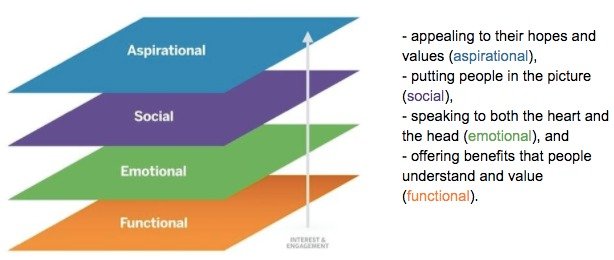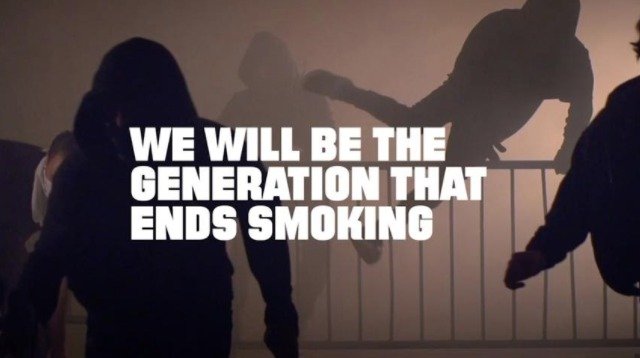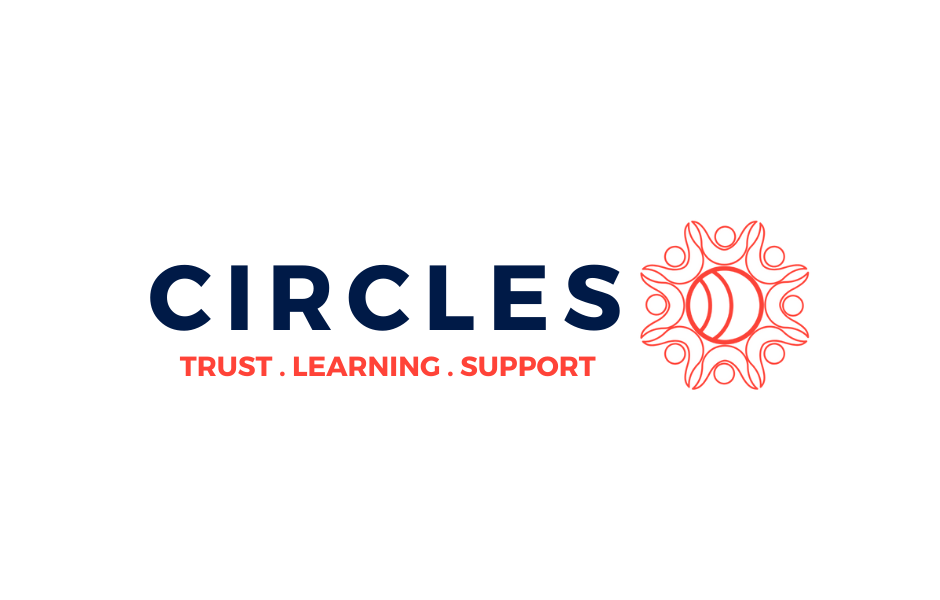Emphasizing the Positive: The Aspirational Communication Model
Doug Hattaway
President
Hattaway Communications
@HattawayComm
“Crises do not only create negative emotions and behaviors…. Feelings of excitement, greater self-worth, strength, and growth may come from the experience.” CDC Crisis and Emergency Risk Communication manual
According to the CDC, “often a crisis results in changes in the way the future is viewed.” It can lead to a new “sense of strength and empowerment,” a “renewed sense of community,” and “opportunities for growth and renewal.” Tapping into positive emotions like these—and appealing to people’s aspirations for themselves and their communities—can power up persuasion and motivation. To drive positive behaviors, public health messaging needs to speak to the heart and the head.
The Aspirational Communication Model shown below provides a systematic, science-based approach to communicating with maximum motivating power. Drawing from motivational, cognitive, and social psychology, the model suggests that you achieve greater levels of interest and engagement when you connect with people on multiple levels:
Aspirational
Your aspirations are your ideas about the kind of person you/we want to be—and the kind of life you want to live. These ideas are powerful drivers of our decisions and behaviors. This crisis offers an opportunity to call on people’s aspirations and offer them language, ideas, and actions that encourage them to be their best selves.
Social
As explained earlier, social proof and social influence are powerful drivers of decision-making and behavior, particularly when people don’t know much about the topic or are confronted with conflicting information. We look to others like us—and to those we respect and admire—for cues as to how we should think and behave. And we tend to take actions that we see others taking. It’s crucial to put people in the picture who appeal to your audience.
Emotional
Emotions run high in times of crisis, and they can motivate productive action—or counter-productive action. People need accurate information, and their emotional state is key to whether they will notice it, remember it, and be moved to act upon it. That’s because emotion works with cognition—thinking—to help us with attention, retention, and motivation. To motivate people to take productive action, communications must address emotional dynamics into—such as reducing anxiety that gets in the way and increasing a sense of personal agency moves people to act.
Functional
To take productive action, people must know what to do. As explained earlier, the key here is to keep it super simple. Communication about actions must creative “intuitive” understanding, which means that people get it instantly, with little mental effort. That’s because we’re hardwired not to use our precious mental energy. A crisis taps our physical, emotional, and mental energy, leaving us feeling depleted. Eradicate all expert jargon from crisis communications, and only use language that is familiar to your audience. Don’t overwhelm people with TMI—too much information, too many ideas.
Stories: Aspirational Communication in Public Health
An aspirational approach helped these two public health campaigns achieve impressive results.
Cutting the rate of teen smoking in the U.S.:
In 2000, 23 percent of American teenagers reported smoking cigarettes. A much-studied and -celebrated campaign by the Truth Initiative, a nonprofit public health organization, led the way in cutting teen cigarette smoking to below 5 percent in 2019.
Truth’s communications strategy aimed to change young adults’ attitudes toward cigarette smoking—not just by providing information about then negative health effects—but by promoting an “aspirational identity” to at-risk adolescents.
We’re highly motivated to take actions that help us live up to our image of the kind of people we want to be—our aspirational identity. Truth tapped into this motivation by branding a tobacco-free lifestyle through words, images, and stories that made it cool to be a non-smoker.
The Truth team had their work cut out for them. Teens in their at-risk audience were subject to powerful countervailing influences, such as pressure from peers, glamorized images of smoking on TV and in movies, and billions of dollars in marketing by tobacco companies. To successfully lowering smoking rates, Truth’s aspirational brand strategy had to drive attitude change durable enough to resist tobacco industry marketing.
Ads for youth antismoking campaigns incorporated simple but effective images that communicated the rebellious independence of teenagers.
Truth used the tools and techniques of consumer marketing to promote the aspirational identity of a cool non-smoker. Its “counter-marketing” campaign was a call to action for truth-telling teens to stand up against deceptive tobacco companies that aimed to addict young people to their products. Along with this powerful storyline, Truth provided a steady stream of factual information and opportunities for productive action. It all added up to change social norms around smoking cigarettes among young people.
You can read more about Aspirational Communication and the Truth Initiative in this cover story in Stanford Social Innovation Review.
Reducing the unintended pregnancy rate in New York City:
In 2014, Planned Parenthood aimed to encourage young women in New York City to use contraception consistently, in hopes of reducing the city’s unintended pregnancy rate. At the time, public health experts estimated that 6 in 10 pregnancies were unintended.
Communications research found that encouraging contraceptive use would require overcoming stigma and misinformation around birth control. Research also found that the target audience of low-income, young women faced financial insecurity and other stresses. Many felt a lack of control over their life circumstances. They aspired to have more control and feel a greater sense of agency. Young women in focus groups easily made the connection between taking control of their reproductive lives and having more control over their education and job opportunities. They wanted to take charge of their futures.
Guided by these and other research insights, the campaign adopted an empowering message: I’m On It. The message is a confident statement of agency, control and competence, like “I got this.” Of course, it suggests being “on” a contraceptive, as in, “I’m on the pill.”
Focus groups participants selected among various photographs of their peers to inform the visual strategy for the campaign. They chose images of young women who looked confident and in control.
This fresh approach to public health communications captured the imagination of New York City’s public health community. A Community Engagement Group comprising 88 organizations adopted it for programs targeting different populations across the city. Engagement on Planned Parenthood’s social-media channels rose from several dozen visits a day to more than 600. Visitors spent a lot of time looking through the information-rich website.
In 2016, unplanned pregnancies in New York City were down 57 percent from their level in 2000, according to the city’s Department of Health and Mental Hygiene. Experts credit that success to a multitude of players and policies, including Planned Parenthood of New York City.
You can read more about Planned Parenthood’s I’m On It campaign in this case study.
If you have questions or need help with strategic communications, feel free to email Hattaway Communications: info@hattaway.com.
If you’d like to learn more about Aspirational Communication, check out our Achieve Great Things podcast and blog.





